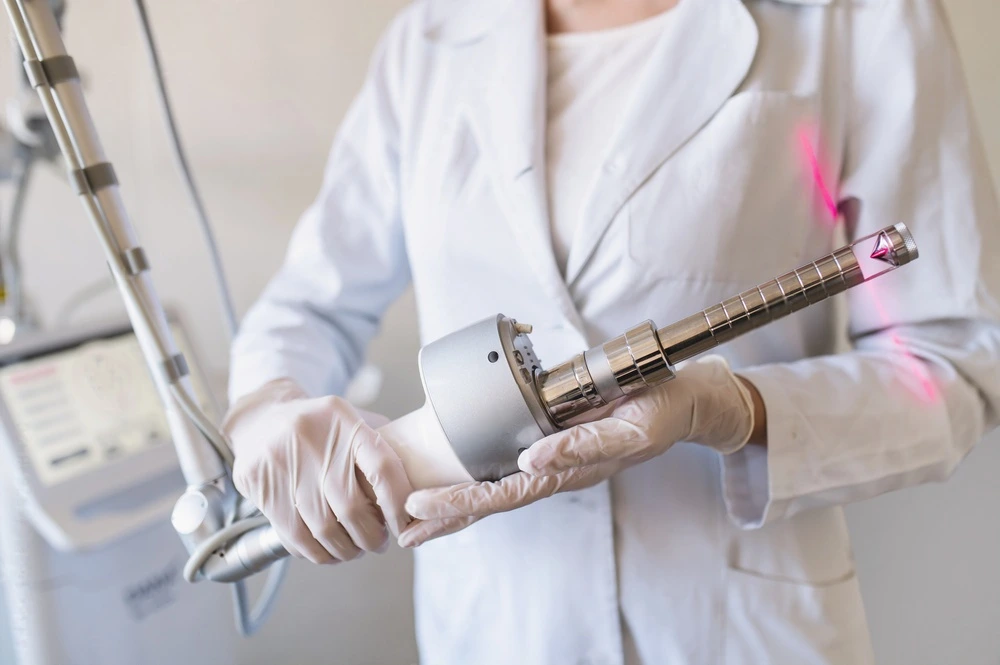Urinary incontinence is a common yet often under-discussed condition that affects people of various ages and backgrounds. Various factors, including pregnancy, childbirth, aging, obesity, and certain medical conditions can cause it. Fortunately, there is hope for those dealing with urinary incontinence in the form of Pelvic Floor Therapy.
Understanding Urinary Incontinence
Urinary incontinence is a prevalent and embarrassing condition affecting millions of people, primarily women. To better understand urinary incontinence, let’s explore its causes, types, symptoms, and risk factors.
Causes of Urinary Incontinence:
Numerous reasons can lead to urinary incontinence, such as:
- Weak Pelvic Floor Muscles: One of the leading causes is weakened or damaged pelvic floor muscles, often occurring due to childbirth, aging, or obesity. These muscles play a critical role in controlling the bladder.
- Neurological Conditions: Conditions like multiple sclerosis, Parkinson’s disease, or spinal cord injuries can disrupt the communication between the brain and bladder, leading to incontinence.
- Urinary Tract Infections (UTIs): Infections in the urinary tract can irritate the bladder and cause temporary incontinence.
- Medications: Some medications, particularly diuretics, can increase urine production and contribute to incontinence.
- Hormonal Changes: Menopause-related hormonal changes can weaken the pelvic floor muscles and cause incontinence in women.
Types of Urinary Incontinence:
Urinary incontinence can manifest in several forms:
- Stress Incontinence: This occurs when physical activities like sneezing, coughing, laughing, or lifting heavy objects put pressure on the bladder, causing leakage.
- Urge Incontinence: This type, sometimes referred to as an overactive bladder, is characterized by an intense, sudden urge to urinate that frequently results in uncontrollably leaking urine.
- Mixed Incontinence: Some individuals experience a combination of stress and urge incontinence.
- Overflow Incontinence: This is the result of incomplete bladder emptying, which causes continuous dribbling or leaking.
- Functional Incontinence: In some cases, physical or cognitive impairments make it challenging for a person to reach the toilet in time.
Symptoms:
Depending on the type and severity of the condition, the symptoms of urine incontinence might vary. However, they may include the following:
- Frequent urination.
- Urgency to urinate.
- Involuntary urine leakage.
- Leaking when laughing, sneezing, or lifting.
- Feeling the need to urinate at night (nocturia).
- Difficulty emptying the bladder completely.
Risk Factors:
Certain factors increase the risk of developing urinary incontinence, including:
- Gender: Urinary incontinence is more common in women, particularly during and after pregnancy.
- Age: Aging can weaken pelvic floor muscles and reduce bladder capacity.
- Obesity: Extra weight might increase the bladder’s pressure.
- Smoking: Smoking can irritate the bladder and coughing from smoking can worsen stress incontinence.
- Family history: Genetics can play a role in susceptibility to incontinence.
Thankfully, there are many therapeutic alternatives, such as pelvic floor therapy, available to address urine incontinence.
How Does Pelvic Floor Therapy Work?
A specific type of physical treatment called pelvic floor therapy concentrates on the muscles, ligaments, and connective tissues of the pelvic floor. In fact, the pelvic floor muscles support the pelvic organs and maintain bladder control. When these muscles weaken or become dysfunctional, urinary incontinence can occur.
Here’s how pelvic floor therapy can help:
- Pelvic Floor Muscle Training: One of the primary components of pelvic floor therapy is pelvic floor muscle training. Patients are taught to perform specific exercises, often referred to as Kegel exercises, which strengthen the pelvic floor muscles. Regular exercise can result in increased control over urination and muscle tone.
- Biofeedback and Electrical Stimulation: Some pelvic floor therapists use biofeedback and electrical stimulation techniques to help patients identify and engage their pelvic floor muscles effectively. Biofeedback provides real-time information about muscle activity, allowing patients to visualize their progress.
- Education and Lifestyle Modifications: Patients can lessen the frequency and severity of episodes of urine incontinence by adopting healthy bladder practices and lifestyle changes, which are taught by pelvic floor therapists. This may include dietary changes, fluid management, and strategies to avoid bladder irritants.
- Manual Therapy: In some cases, manual techniques such as myofascial release and trigger point therapy may be used to address muscle tension and discomfort in the pelvic region.
Benefits of Pelvic Floor Therapy for Urinary Incontinence
Let’s explore some of the key benefits of pelvic floor therapy in managing and alleviating this condition:
- Strengthening Pelvic Floor Muscles: Pelvic floor therapy focuses on strengthening the muscles, ligaments, and connective tissues of the pelvic region. Through targeted exercises and techniques, patients can significantly improve the strength and endurance of their pelvic floor muscles. This increased muscle tone can enhance bladder control, reducing the likelihood of leakage.
- Improved Muscle Coordination: Proper coordination of the pelvic floor muscles is essential for bladder control. Pelvic floor therapy teaches patients how to effectively engage and coordinate these muscles. This coordination ensures that the pelvic floor can respond appropriately to changes in intra-abdominal pressure, such as during sneezing, coughing, or physical activity, reducing the risk of stress incontinence.
- Reduced Urinary Incontinence Symptoms: A significant decrease in the frequency and intensity of episodes of urine incontinence is often observed in patients undergoing pelvic floor therapy. As the pelvic floor muscles become stronger and more responsive, patients gain better control over their bladder function.
- Enhanced Quality of Life: An individual’s everyday life, sense of self, and general well-being can all be significantly impacted by urinary incontinence. Pelvic floor therapy offers a path to regaining confidence and independence. A more active and satisfying lifestyle can result from improved bladder control, which enables patients to partake in activities they might have avoided out of concern for leaks.
- Non-Invasive and Low-Risk: Pelvic floor therapy is a non-invasive and conservative treatment option, making it a preferable choice for many individuals. Unlike surgical interventions, pelvic floor therapy carries minimal risks and side effects. It is a safe and effective approach to addressing urinary incontinence.
- Tailored Treatment Plans: Each patient’s experience with urinary incontinence is unique, and pelvic floor therapy takes this into account. Based on the kind and degree of incontinence, therapists create individualized treatment programs that make sure the therapy meets the unique needs and objectives of the patient.
- Educational Component: Pelvic floor therapy includes an educational component that empowers patients with knowledge about healthy bladder habits and lifestyle modifications. This education helps individuals make informed choices to better manage their condition, including dietary adjustments, fluid management, and strategies to avoid bladder irritants.
- Biofeedback and Electrical Stimulation: Some pelvic floor therapy programs incorporate biofeedback and electrical stimulation techniques. Biofeedback provides real-time information about muscle activity, helping patients visualize their progress and refine their muscle control. The pelvic floor muscles can be stimulated with electrical stimulation, which helps in muscular recruitment and strengthening.
By focusing on strengthening and coordinating the pelvic floor muscles and providing education and support, this therapy offers a path to improved bladder control, reduced symptoms, and an enhanced overall quality of life. If you or someone you know is struggling with urinary incontinence, consider consulting a pelvic floor therapist to explore how this therapy can provide relief and restore confidence.
Conclusion
Pelvic floor therapy, a treatment targeting pelvic floor muscles, can significantly improve bladder control, reduce symptoms, and enhance the quality of life for individuals with urinary incontinence. BodySculpt By Sakoon provides Pelvic Floor Therapy, a specialized treatment for various issues like urinary and bowel issues, sexual dysfunction, pelvic pain, pre- and post-natal discomfort, and pregnancy-related pain. Embrace the possibility, and let pelvic floor therapy empower you to live life to the fullest, unburdened by the limitations of urinary incontinence!





